At Commonwealth Contractors, our approach to building mirrors my personal philosophy on life, blending practicality with a touch of ingenuity. With a deep respect for classical building principles and a keen eye for modern improvements, you can rest assured that when you collaborate with Commonwealth Contractors, your project will be managed with quality and integrity.
.svg)


Greek Revival architecture swept across Virginia in the early-to-mid 19th century, leaving a legacy of stately courthouses, elegant churches, and refined residences. Inspired by the ancient temples of Greece, this style symbolized the young American republic’s identification with democratic ideals and classical civilization. In Virginia, Greek Revival buildings stand as enduring monuments to a period of optimism, innovation, and civic pride. This article explores the origins, defining features, major architects, and lasting influence of Greek Revival architecture in Virginia, with a focus on the region’s most notable examples.
In the heart of Charlottesville, VA, Commonwealth Contractors are established experts in restoring, renovating, and building homes that honor Virginia’s Greek Revival architectural heritage. If you have any questions after reading this guide, please reach out.
The Origins of Greek Revival Architecture in Virginia
Nationalism, Democracy, and the Classical Past
The Greek Revival movement began in the United States in the 1820s, reaching its peak by the 1850s. Americans saw parallels between their own struggle for independence and the ancient Greeks’ fight for democracy. The style’s popularity was further fueled by archaeological discoveries in Greece and a growing fascination with classical antiquity.
In Virginia, Greek Revival architecture was embraced for both public and private buildings. The state’s leading citizens and architects saw the style as a fitting expression of republican values, civic virtue, and cultural refinement.
Jefferson’s Influence and the Temple Form
Although Thomas Jefferson’s neoclassical designs predate the Greek Revival proper, his use of temple forms for the Virginia State Capitol and the University of Virginia set a precedent for later architects. Jefferson’s vision of architecture as a vehicle for expressing democratic ideals deeply influenced the adoption of Greek Revival in Virginia.
Defining Features of Greek Revival Architecture

Temple-Inspired Exteriors
Greek Revival buildings are instantly recognizable for their bold, temple-like facades. Key features include:
- Columned porticoes: Prominent front porches supported by columns, often of the Doric or Ionic order.
- Pediments: Triangular gables above the portico, echoing the form of ancient Greek temples.
- Front-facing gables: The main roof gable faces the street, reinforcing the temple analogy.
- White-painted exteriors: Buildings were often painted white to resemble marble, the material of Greek antiquity.
- Heavy cornices and bold moldings: Emphasizing the building’s mass and classical proportions.
Interior Details and Layout
Greek Revival interiors often feature high ceilings, symmetrical room arrangements, and classical details such as:
- Greek key and anthemion motifs: Decorative patterns inspired by ancient Greek art.
- Paneled doors and transoms: Allowing light to filter into central hallways.
- Simple, bold woodwork: Less delicate than Federal style, but more monumental in scale.
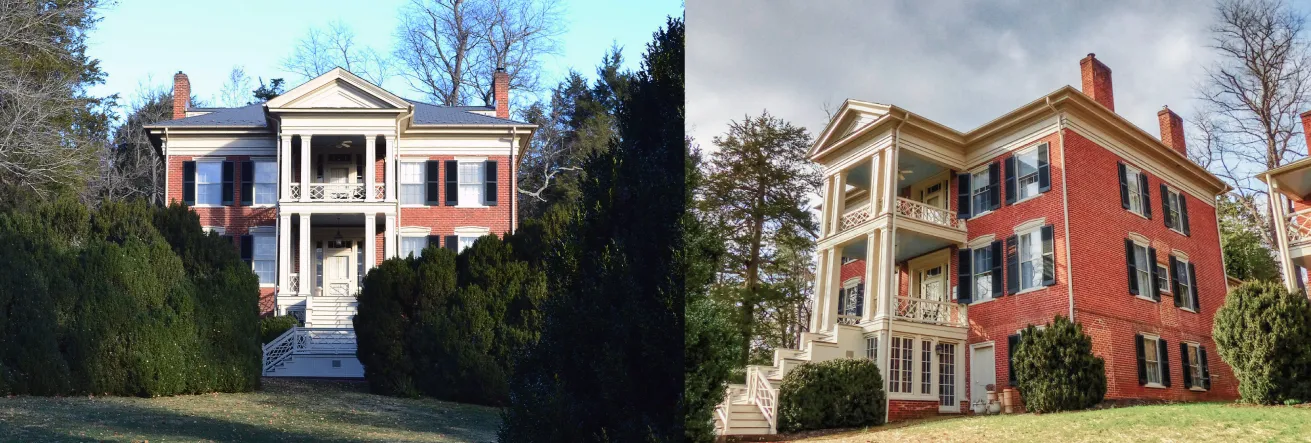
Iconic Examples of Greek Revival Architecture in Virginia
Virginia is home to a wealth of Greek Revival buildings, from grand public edifices to refined country homes. These structures not only exemplify the style’s defining features but also reflect the aspirations and achievements of the state’s citizens during a transformative era.
- Pittsylvania County Courthouse (Chatham, 1853): One of Virginia’s finest Greek Revival public buildings, with a red brick exterior, columned portico, and elaborate entablature. The clock cupola incorporates Italianate features, reflecting the period’s stylistic transitions.
- The Cedars (Albemarle County, 1850s): Blends Greek Revival with Jeffersonian classicism, featuring Greek profiles in the entablature, window trim, and interior woodwork.
- Mount Fair (Albemarle County, 1848–49): A little-altered Greek Revival house with book-based trim and a balustraded lantern giving daylight to the attic stairwell.
- Emmanuel Church (Albemarle County, 1863): Originally built in the Greek Revival style, later remodeled in the Georgian Revival.
- Seven Oaks Farm (Albemarle County, 1847–48): A frame Greek Revival dwelling, later embellished with a monumental Ionic portico.
- Abell-Gleason House (Charlottesville, 1859): A robust brick Greek Revival residence in the heart of the city.
- Bellevue (Greenwood-Afton Rural Historic District, 1859): A well-preserved mix of Greek Revival and early Italianate forms, with a pedimented portico and paired columns.
- Rose Cottage (Peyton House): Greek Revival and Italianate influences, though now demolished.
Greek Revival in Civic and Religious Architecture
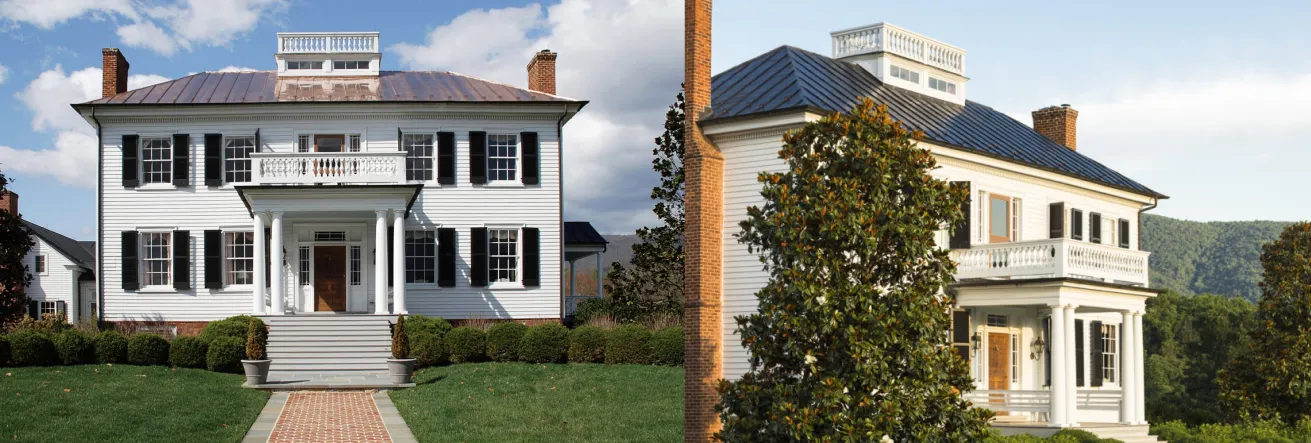
Courthouses and Public Buildings
The Greek Revival style was especially popular for courthouses, banks, and other civic buildings, where its temple-like forms conveyed dignity, stability, and democratic ideals. The Virginia State Capitol, designed by Jefferson, set the precedent for temple-form government buildings throughout the state.
Other notable examples include the courthouses of Pittsylvania, Albemarle, and other counties, many of which remain in use today.
Churches and Religious Structures
Greek Revival churches, such as Emmanuel Church and Cove Presbyterian Church, feature columned porticoes, symmetrical facades, and classical detailing. These buildings provided a sense of permanence and grandeur to Virginia’s rural and urban communities.
Greek Revival Residences in Charlottesville and Albemarle County
Charlottesville and Albemarle County are home to several notable Greek Revival houses, many of which have been carefully preserved or restored. These homes reflect the region’s prosperity and cultural sophistication in the antebellum period.
- The Cedars: Built for Col. John S. Cocke, this house blends Greek Revival with Jeffersonian elements and has served as a residence, boys’ school, Civil War hospital, and tavern.
- Mount Fair: Built for William T. Brown, Mount Fair is a handsome example of builder’s Greek Revival adapted for a Virginia gentry residence.
- Seven Oaks Farm: Built for Dr. John Bolling Garrett, this Greek Revival dwelling was later enhanced with a monumental portico.
- Abell-Gleason House: A robust brick Greek Revival home in central Charlottesville.
- Bellevue: A blend of Greek Revival and Italianate forms, with a striking pedimented portico.
Notable Greek Revival Architects, Builders, and Craftsmen

Influential Figures
While many Greek Revival buildings in Virginia were designed by local builders using pattern books, several architects left a significant mark on the style:
- James Dinsmore: A master builder who worked for Jefferson and designed Greek Revival houses such as Estouteville.
- Waddy Wood: Remodeled Emmanuel Church in 1911, blending Greek Revival and Georgian Revival elements.
- E. S. McSparren: An English master carpenter who executed the interior woodwork at Cobham Park and Grace Church.
Greek Revival’s Influence on Later Styles
Transition to Italianate and Eclectic Styles
By the late 1850s, Greek Revival began to blend with other styles, such as Italianate and Gothic Revival. Many Virginia homes and public buildings from this period display a mix of classical and romantic elements.
Colonial Revival and Enduring Appeal
The Colonial Revival movement of the late 19th and early 20th centuries often drew on Greek Revival forms, especially for public buildings and grand residences. The style’s emphasis on symmetry, classical detailing, and civic virtue remains influential in Virginia architecture today.
Preservation and the Modern Legacy of Greek Revival Architecture
Historic Landmarks and Districts
Many of Virginia’s Greek Revival buildings have been preserved as part of historic districts or listed on the National Register of Historic Places. The Greenwood-Afton and Southern Albemarle Rural Historic Districts, for example, include numerous Greek Revival and Colonial Revival houses.
Other notable districts, such as Batesville and Covesville, showcase the evolution of rural communities from the Greek Revival period through the 20th century.
Contemporary Relevance
Today, Greek Revival architecture continues to inspire homeowners, architects, and builders in Virginia. Whether restoring an original 19th-century house or designing a new home in the Greek Revival tradition, the principles of proportion, craftsmanship, and harmony with the landscape remain as relevant as ever.
Commonwealth Contractors specializes in projects that honor and adapt these traditions for modern living, ensuring that Virginia’s architectural heritage endures for generations to come.
The Impact of Greek Revival Architecture in Virginia
Greek Revival architecture in Virginia is more than a style, it is a statement of democratic ideals, civic pride, and artistic achievement. Its temple-like facades, bold columns, and classical details have shaped the state’s identity for nearly two centuries. The influence of Greek Revival design can be seen in every subsequent architectural movement, from Italianate and Gothic Revival to the Colonial Revival and beyond.
If you are considering restoring a historic home, building a new residence in the Greek Revival tradition, or simply want to learn more about Virginia’s architectural heritage, Commonwealth Contractors offers unmatched expertise and a deep respect for the region’s history. Contact us today to discuss your project and discover how we can help you bring the timeless beauty of Greek Revival architecture to life in your home.

.svg)
.webp)

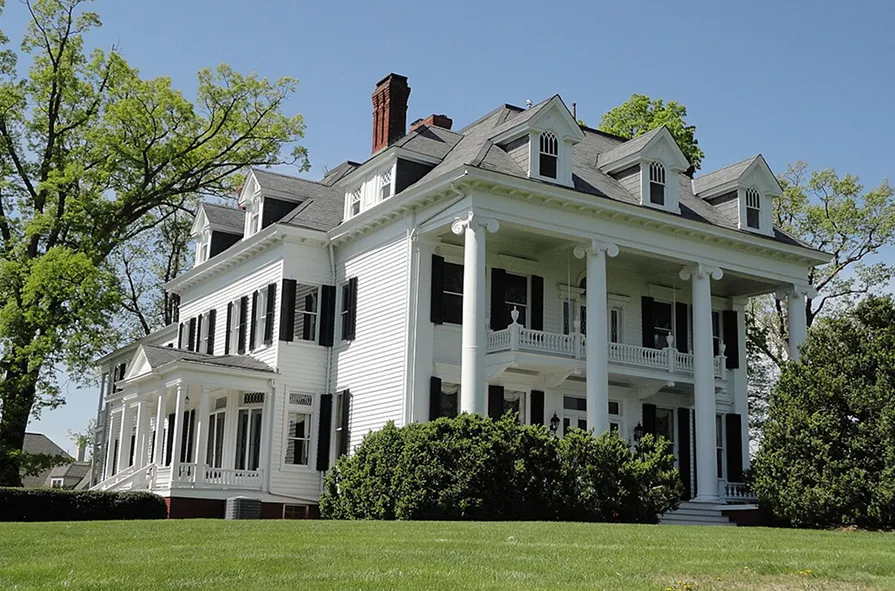
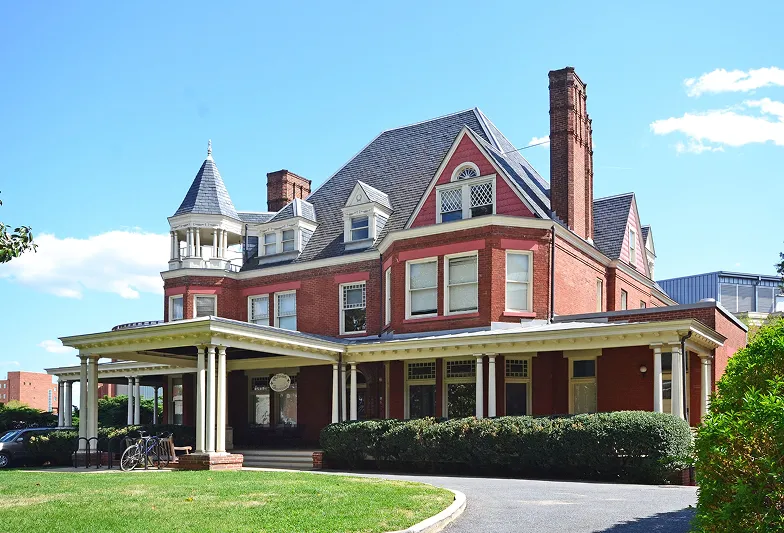
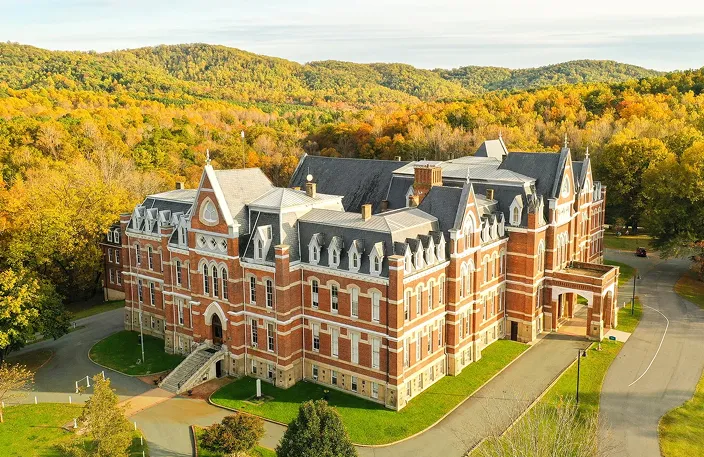
.webp)
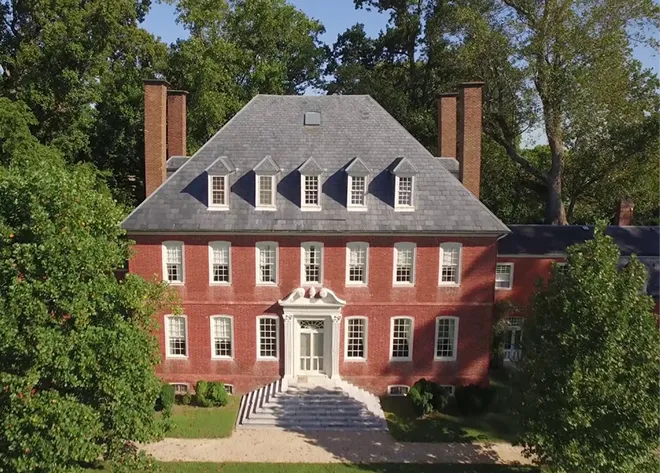
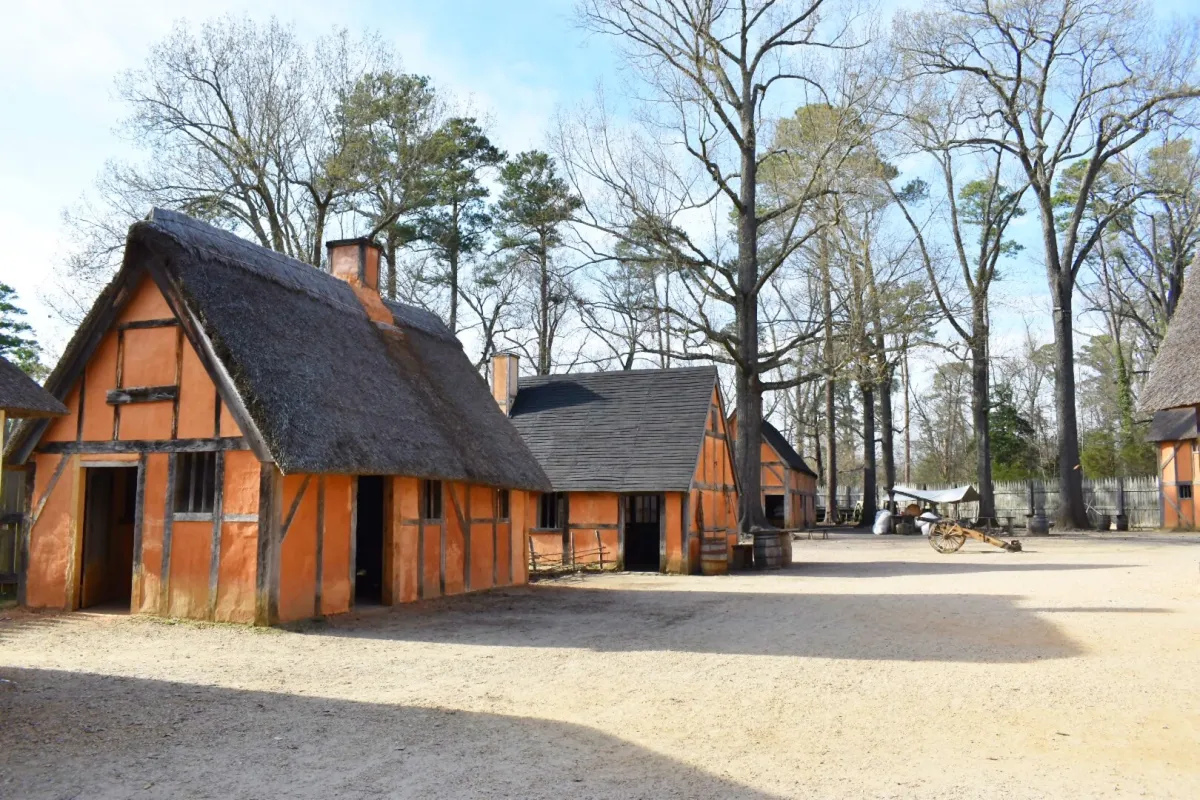
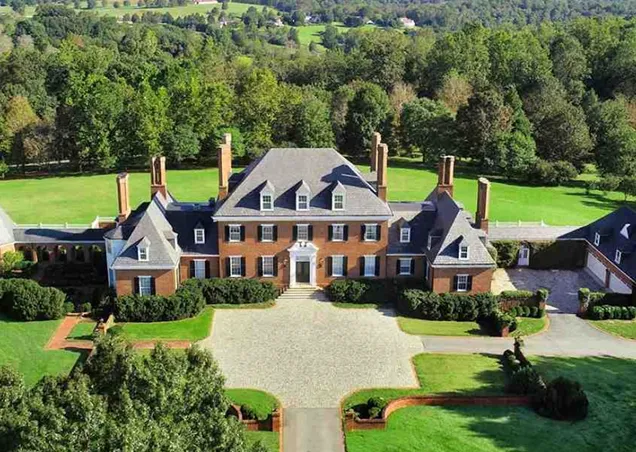
.webp)
.webp)











.webp)
.webp)

.webp)
.webp)
%2520(1).webp)
%2520(1).webp)
%2520(1).webp)

.webp)
.webp)
%2520(1).webp)
%2520(1).webp)

%2520(1).webp)
%2520(2).webp)

%2520(1).webp)
%2520(2).webp)
.webp)



.webp)
.webp)
%2520(2).webp)
.webp)
.webp)
%2520(1).webp)

.webp)
%2520(3)%2520(1).webp)
.webp)
%2520(1)%2520(1).webp)
.webp)
%2520(1).webp)
%2520(2)%2520(1).webp)